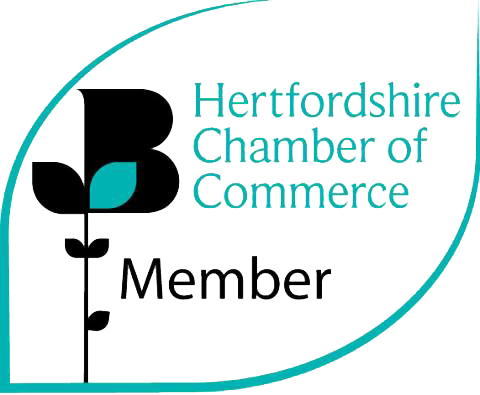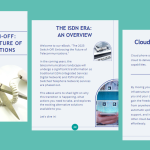Business Broadband
We can help you evaluate the service you need.
Priority Business Broadband & Support
Business broadband is different from residential broadband. Business connections are two to five times faster, as well as receiving priority OpenReach support. When choosing your broadband connection, there is more to consider than just speed.
Fibre broadband is available to over 90% of UK business premises providing a cost-effective and reliable service.
Fibre Reliablility
When running a business you don’t want to experience problems with the services you depend on to keep it running. Being disconnected for even a short period be very disruptive, and loss of service is worse than a slow service.
Fibre broadband is much more reliable than copper wire services so while you may not need fibre speed, you may choose fibre for reliability as well as a reliable Internet service provider that can offer the speed you've been promised.
Support and service
Business Broadband customers receive priority OpenReach support over residential customers. Even the biggest internet providers have occasional issues.
If something goes wrong, you need it fixing - FAST! Forward Comms Business Broadband customers receive Priority OpenReach support to get you back up and running as fast as possible.
Speed & Capacity
Having a fast Business Broadband connection makes sure your office runs smoothly and everyone can get their job done. But too fast and you could be paying for a service you don’t really need, too slow, and your team will find it frustrating to get their work done.
We can help you evaluate the service that is right for you now, and into the future,
Cloud Solutions
If your company currently uses or plans to implement cloud services, it’s important to make sure you have a broadband connection that can handle your requirements.
Cloud technology can save your business time and money but also increases your bandwidth requirements.
Broadband Types
Asymmetric Digital Subscriber Line - (ADSL/ADSL2+)

Standard broadband (ADSL – Asymmetric Digital Subscriber Line) provides a service that utilises a single copper line with voice and data separated by a line filter. This means your phone line is never tied up when using your internet. This broadband service is suitable for most home workers, but providers the lowest speed and level of reliability. The asymmetrical nature of the service means that the download speed is significantly higher than the upload speed. This is perfectly normal, as most users require a higher download capability. This type of service is not recommended for Cloud based Voice products.
Speed 128k – 17Mbps download
Fibre to the Cabinet (FTTC)

Fibre broadband (FTTC – Fibre to the Cabinet) uses fibre optic cable from the local telephone exchange to the street cabinet. The remaining connection from the cabinet to your premises is served over traditional copper wire. The speed you can achieve depends largely on your distance to the street cabinet. Much more reliable than ADSL, this service is sufficient for the majority of small businesses and home users. These services can be set to provide priority for Voice traffic, thus making them ideal for Cloud based Voice services like SIP and Hosted Telephony (VoIP).
Speed 10Mbps – 76Mbps
Fibre to the Premises (FTTP)

Full fibre broadband (FTTP – Fibre to the Premises) runs over fibre optic cable to the street cabinet and then Fibre to your business premises. The biggest advantage of FTTP is that the connection speed is not affected by distance. Because this service is provided through the public telephone switched network (PTSN) your service is shared with up to 50 users and may see drops in speed. Depending on the number of users and the cloud services you use, the speed and reliability delivered by full-fibre is often the best option.
Speed up to 500Mbps
Fibre Leased Line

Unlike the services above, leased lines are not routed though the local exchange.
Reserved exclusively to the leaseholder, connectivity is delivered over fibre providing uncontended symmetrical bandwidth. Whilst broadband speeds depend on proximity to the local telephone exchange, leased lines ensure the speed you are quoted, is the speed you receive.
A leased line provides a symmetrical connection, which means you can send data just as fast as you can receive it. Businesses with high adoption of cloud services benefit from a 1:1 connection ratio to data centres, cloud backup services and when using online software (SaaS).
FAQ's
What broadband packages are available in my area?
Most exchanges and street cabinets provide fibre broadband. Using your phone number, or address for new connections, we can check the options available to you.
Can I use the modem/router I already have?
We will provide a new router already configured to connect to the new service, unless you’re an experienced user or have internal IT support and wish to keep the router you already have. If you would rather use your own, please check with us to make sure its compatible.
What if I need a new phone line?
We work with BT Openreach, so this won’t be any trouble. We will arrange for an engineer to visit your premises at a time convenient for you.
How long would a new broadband line take to install?
It usually takes 5-7 working days for ADSL and 7-10 working days for FTTC connections. FTTP and Leased lines will take significantly longer and advised at time of order.
Ready for unlimited?
All of our connections are Unlimited meaning no additional usage charges. We also offer a range of options regarding IP addresses. The service you choose needs to be capable of handling times of intense activity to ensure your business runs smoothly. Forward Comms will help you evaluate the service you need.




